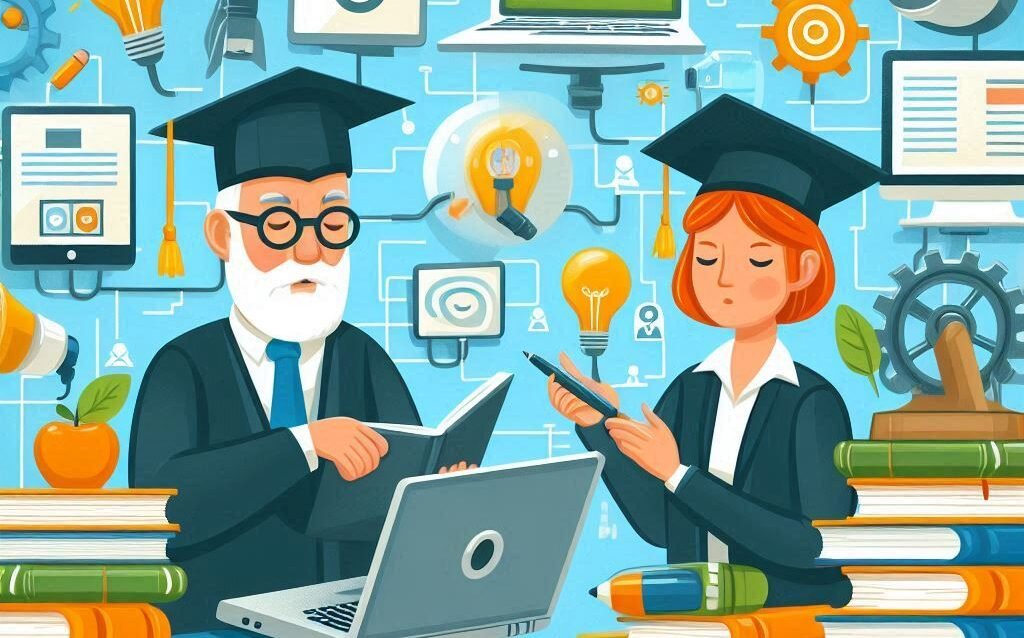The Evolution of Education: From In-Person to Online
The concept of education has undergone significant transformations throughout history, primarily driven by technological advancements and societal changes. Traditional education, as we know it today, finds its roots in informal learning settings, evolving into formal classroom environments where teachers directly impart knowledge to students. This face-to-face interaction fostered not only the acquisition of academic skills but also social cohesion among peers.
With the advent of the 20th century, structured educational systems emerged, enabling a more systematic approach to learning. However, this conventional setup faced challenges, particularly as student populations increased and resources became strained. The need for alternative methods of instruction became apparent, setting the stage for educational reform and innovation.
The introduction of technology into learning environments marked a pivotal point in the evolution of education. The internet’s proliferation in the late 20th century laid the groundwork for revolutionary changes. Educational institutions began to experiment with various forms of remote learning, allowing educators to reach students beyond physical classrooms. Online learning platforms, in particular, have emerged as a powerful force, providing unparalleled access to educational resources and facilitating a more flexible learning experience.
Statistics highlight this shift dramatically; according to recent studies, over 30% of higher education students now engage in at least one online course. Furthermore, the number of students opting for fully online degree programs has surged, reflecting a growing acceptance of digital learning environments. Today, we witness a diverse landscape where traditional and online modalities coexist, offering various paths for learners to attain their educational goals. This paradigm shift not only democratizes access to education but also challenges the conventional notions of teaching and learning in previously established classroom settings.
(Purchase today by clicking on the image)
Comparative Analysis: Online Platforms vs. Traditional Learning
The evolution of education has witnessed a significant shift from traditional learning environments to online platforms. Both methods carry unique advantages and disadvantages that cater to various learner needs. Understanding these differences is crucial for educators, students, and policymakers alike.
Online platforms are lauded for their flexibility. They afford students the opportunity to tailor their learning schedules to fit their personal or professional commitments. For instance, learners can access course materials at any time, facilitating a self-paced education that is often unattainable in conventional classrooms. Accessibility is another pivotal advantage; students from remote or underserved areas can access quality educational resources without geographical constraints. However, this flexibility can sometimes lead to decreased engagement. The lack of a structured environment may cause some learners to struggle with self-discipline and motivation, impacting their educational outcomes negatively.
In contrast, traditional education emphasizes direct interaction between students and instructors, fostering a collaborative learning atmosphere. This face-to-face engagement often boosts accountability, encouraging students to actively participate in the learning process. Moreover, traditional classrooms can provide immediate feedback and support, which enhances comprehension and maintains student focus. However, the rigidity of this format may hinder some students, particularly those who thrive in more adaptable learning settings. Furthermore, logistical issues, such as commuting and scheduling, can create barriers to attendance.
Studies indicate that the effectiveness of either platform can vary significantly based on individual learning preferences. For instance, research has shown that some students achieve better results in structured environments, while others excel in flexible settings that online platforms offer. The quality of education remains a critical consideration; both online and traditional methods must prioritize pedagogical effectiveness to meet diverse learner needs. Recognizing the strengths and weaknesses of each approach is essential for optimizing the overall educational experience.
The Role of Technology in Shaping Educational Methods
In recent years, the landscape of education has dramatically transformed due to the integration of technology into learning environments. Online platforms have introduced a variety of tools that enhance the educational experience, making it more interactive and personalized. Innovations such as interactive videos allow students to engage with content actively, rather than passively consuming information. This not only fosters better retention but also encourages critical thinking by prompting learners to respond to questions and scenarios embedded within the video content.
Virtual classrooms represent another significant advancement, providing a space for real-time interaction between educators and students regardless of geographical constraints. These digital classrooms facilitate live discussions, presentations, and collaborative projects, which mirror the dynamics of face-to-face learning. Moreover, they enable educators to incorporate multimedia resources that appeal to different learning styles, ensuring a more inclusive educational approach.
Artificial Intelligence (AI) plays a crucial role in personalizing the learning experience by analyzing individual student performance and adapting materials to suit their needs. AI-driven learning platforms can identify knowledge gaps and offer tailored resources, allowing students to progress at their own pace. This level of personalization not only boosts engagement but also enhances learning efficiency by focusing on areas requiring improvement, thus moving away from a one-size-fits-all model.
The implications of these technologies extend into traditional education as well. Educators are now tasked with adapting and integrating these digital tools into their methodology. By leveraging technology, teachers can enhance their instructional strategies, promote deeper engagement, and support diverse learner needs. Embracing these changes may initially seem daunting; however, the potential benefits for student engagement and academic success are profound. Ultimately, the role of technology continues to shape educational methods, suggesting a progressive convergence between traditional practices and modern innovations.
Future Perspectives: The Integration of Online and Traditional Education
The evolution of education hinges on the seamless integration of online platforms with traditional educational practices. As technology continues to advance, educational institutions are increasingly adopting hybrid learning models that combine the strengths of both methodologies. This shift is not merely a trend; it is a strategic response to the demands of contemporary learners who benefit from both in-person interactions and the flexibility that online education affords.
Hybrid learning models, which integrate face-to-face teaching with online platforms, present numerous advantages. They provide students with the opportunity to engage in self-paced learning while maintaining meaningful interactions with educators and peers. These models also cater to diverse learning styles, ensuring that education is more inclusive and personalized. However, the implementation of such models may face challenges. Educators must be equipped to adapt their teaching methods to incorporate digital tools effectively, a task that requires ongoing professional development and support.
Moreover, institutions must prepare for an increasingly digital era by investing in technology infrastructure and training staff to leverage online resources efficiently. Collaboration between educators and technology experts will be vital in creating curricula that incorporate both traditional and online elements, ensuring a holistic educational experience. Additionally, educational leaders must consider the ethical implications of digital learning, safeguarding student data and promoting equitable access to online resources.
Expert predictions indicate that the educational landscape of the future will likely embrace a more blended approach. Schools and universities that successfully integrate online platforms with traditional teaching methods will foster a more dynamic learning environment. This synergy not only enriches the educational experience but also prepares students to navigate an increasingly interconnected world. By embracing this integration, education can evolve into a more versatile and effective system that meets the needs of all learners.
(Purchase today by clicking on the image)






